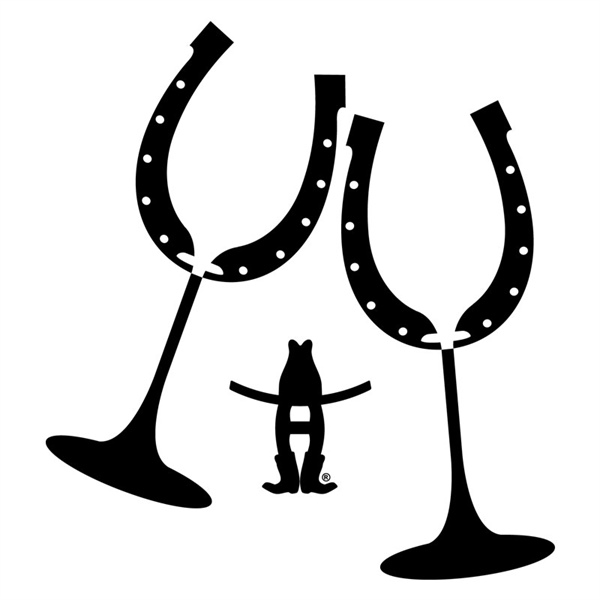While Houston winters don’t pack the punch of a Midwestern blizzard, we do have cold and damp days where we want to hunker down in front of a warm, cozy fire and enjoy a glass of wine. But what wine? Probably not a “porch wine” like Pinot Grigio, lightly chilled to ward off the blast of heat that blows across the patio. Most likely, we’ll opt for something that is rich and full-bodied, a wine that will warm us up, whether we’re enjoying a dinner of hearty beef stew or curling up on the couch with a favorite movie. Here are some wines that will help chase away the winter chills.
PETITE SIRAH
When it comes to big wines, this is the Granddaddy of them all: deep and inky in color, high in tannins and acids, and rich in flavors of blueberry, chocolate, plums and black pepper. This wine is a perfect complement to a beef stew that’s been cooking all day with hearty potatoes, or a braised meat served in its own reduction sauce. For a special treat, try pairing the wine with dark chocolate.
Syrah
Don’t confuse this with Petit Sirah: They are two entirely different grapes. Syrah is very versatile, with styles and flavor profiles influenced by the climate. The Northern Rhone (Syrah’s ancestral home) and parts of the Walla Walla AVA in Washington State produce wines with medium-plus to high levels of tannins and flavors of blackberry, mint and black pepper notes. In hot climates, such as the Barossa Valley of Australia, the wine is referred to as “Shiraz,” and the style is richer, riper and more full-bodied. Pair a lighter style of Syrah with the delicate flavors of lamb. A bolder-flavored Syrah will hold up to the intense flavors of grilled meats or slow-roasted barbecue pork.
CABERNET SAUVIGNON
To many, especially Texans, Cabernet is King. This is the perfect go-to wine for that big, juicy steak, a holiday roast, or a cheese plate with sharp and aged cheeses. The classic Cabernet is full-bodied with high tannins and acids, which contribute to the wine’s aging potential. In cooler climates, Cabernet tends to produce wines with black currant, green bell pepper, mint and cedar. In more moderate climates, black current may be accompanied by notes of black cherry and black olive. In Australia, particularly the Coonawarra region, look for a characteristic eucalyptus flavor. Cabernet is invariably aged in oak, which adds flavors of vanilla bean, cedar, smoke, bacon, chocolate, pipe tobacco, mocha and toast — flavors that all taste better when it’s cold outside.
ZINFANDEL
Zinfandels range from the fresh and fruity, low alcohol and red raspberry flavored-wines to the ultra-ripe that can taste jammy and sweet. Lighter-style Zins are great winter wines because they pair so well with winter savory dishes, such as eggplant Parmesan, meatballs, lasagna and even spaghetti. With these plates, the fresh fruit of the wine will bring out the tangy acid in tomato-based sauces. Heavier Zins pair well with cheeses and chocolate desserts. Zinfandel has a rich history in California, with signature wines coming from Amador County, Lodi, Sonoma, Napa and Paso Robles.
WHITE WINES
Let’s not forget about white wines. While we generally think of white wines as summer coolers, some definitely have a place at the table during the winter months. A full-bodied white wine, especially one with high acidity, will cut through rich and heavy winter foods, yet feel fresh and lively on the palate. If you’re serving mashed potatoes topped with butter, warm chowders or creamy pasta sauces, try an oaked Chardonnay. These are rich, full-bodied wines, with additional flavors of vanilla, butter and even caramel from the oak, which make them a perfect pairing for enjoying winter comfort food, or just sitting by the fire and reading a book. Chenin Blanc, which is native to the Loire Valley in France and is enjoying a resurgence in South Africa, offers depth, body and complexity. Chenin Blancs come in a variety of styles, ranging from dry to sweet and even sparkling, making them a versatile wine choice for all dishes. Chenin Blancs pair well with light appetizers, rich stews, grilled vegetables or roasted chicken.
This list is by no means inclusive. Malbec, Petit Verdot and Tempranillo fall into the full-bodied wine category, as do some Pinot Gris wines from Alsace. There are even winter rosés that are darker, fuller and more complex than their summer counterparts, which can pair well with heavy and rich winter foods. And don’t forget sparkling wines. Whether you’re drinking Cava, Champagne or Prosecco, a glass of bubbly can always add warmth while you’re nesting indoors on a cold, winter evening.


